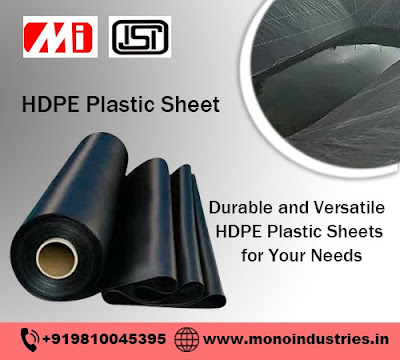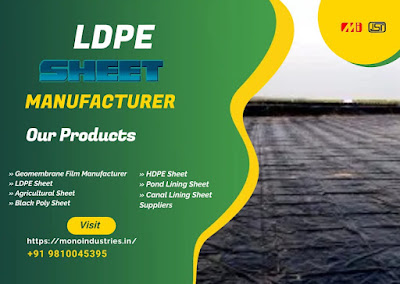Durable and Versatile HDPE Plastic Sheets for Your Needs
In the realm of plastics, High-Density Polyethylene (HDPE) has emerged as a versatile and durable material with a myriad of applications. Among its many forms, HDPE plastic sheets stand out for their exceptional strength, flexibility, and resistance to various environmental factors. Whether you're in construction, agriculture, manufacturing, or DIY projects, understanding the qualities and applications of HDPE plastic sheets can open a world of possibilities for your needs.
Understanding HDPE: A Foundation for Durability
High-Density Polyethylene, or HDPE, is a type of
thermoplastic polymer known for its high strength-to-density ratio. This
material is produced from petroleum by a catalytic polymerization process. The
result is a plastic that is strong, durable, and exhibits excellent resistance
to chemicals and UV rays.
HDPE is characterized by its linear structure, which imparts
unique properties to the material. The absence of branches in its molecular
makeup contributes to its high density and strength, making it suitable for a
wide range of applications.
Why HDPE Plastic Sheets?
1. Durability:
The foremost characteristic that sets HDPE plastic sheets
apart is their durability. These sheets can withstand extreme temperatures,
making them suitable for both hot and cold environments. Their resilience to
impact and stress ensures longevity, making them an ideal choice for
applications where longevity is paramount.
2. Chemical Resistance:
HDPE plastic sheets
are resistant to a wide range of chemicals, acids, and alkalis. This makes them
an excellent choice for applications where exposure to corrosive substances is
a concern. From chemical storage tanks to industrial linings, HDPE plastic
sheets provide a protective barrier against potentially damaging substances.
3. Water and Moisture Resistance:
HDPE is inherently water-resistant, making it an ideal
material for applications where exposure to moisture is inevitable. Unlike some
other plastics, HDPE does not absorb water, ensuring that its structural
integrity is maintained even in humid or wet conditions.
4. UV Stability:
Exposure to ultraviolet (UV) rays can degrade many materials
over time, but HDPE is highly resistant to UV radiation. This makes HDPE
plastic sheets suitable for outdoor applications where prolonged exposure to
sunlight is unavoidable. From agricultural applications to outdoor signage,
HDPE stands up to the elements.
5. Versatility in Applications:
HDPE plastic sheets find applications across a diverse range of industries:
a. Construction: HDPE sheets
are used in construction for their durability and resistance to moisture. They
are employed in applications such as damp-proof courses, formwork, and
protective barriers.
b. Agriculture: In
agriculture, HDPE plastic sheets are used for pond liners, greenhouse covers,
and as a protective layer for crops. Their resistance to chemicals is
particularly beneficial in farming applications.
c. Manufacturing: HDPE is a popular choice in the manufacturing
industry for components that require strength, chemical resistance, and
dimensional stability.
d. DIY and Home Improvement: DIY enthusiasts and homeowners find HDPE
sheets useful for a variety of projects. From custom storage solutions to
garden structures, the versatility of HDPE lends itself well to creative
endeavors.
Selecting the Right HDPE Plastic Sheet: Considerations
When choosing HDPE plastic sheets for your specific needs, several considerations come into play:
1. Thickness:
HDPE sheets come in various thicknesses to accommodate
different applications. Thicker sheets offer greater strength and durability
and are suitable for heavy-duty applications, while thinner sheets may be more
appropriate for lighter projects.
2. Colour Options:
HDPE sheets are available in a range of colours. While black
is a common choice for applications requiring UV resistance, other colours may
be preferred for aesthetic reasons or to differentiate between sheets in a
manufacturing or construction setting.
3. Texture:
Some HDPE
sheets feature a textured surface, which can enhance slip resistance in
certain applications. Consider the intended use and whether a textured surface
would be beneficial for safety or functionality.
4. Size and Dimensions:
HDPE sheets are available in various sizes and dimensions.
Consider the specific requirements of your project or application and choose
sheets that can be easily adapted to your needs with minimal waste.
Conclusion: Elevate Your Projects with HDPE
In the world of plastics, HDPE stands out as a material that combines durability, versatility, and environmental resilience. HDPE plastic sheets, in particular, offer a canvas for innovation and creativity across diverse industries and applications.
Whether you're a professional in construction, agriculture, or manufacturing, or a DIY enthusiast working on a home improvement project, the durability and versatility of HDPE plastic sheets make them a reliable choice. Invest in the future of your projects with a material that not only meets but exceeds expectations – choose HDPE for lasting strength and adaptability.



Great article! HDPE high density polyethylene sheet truly stands out for its durability and wide range of applications. I've personally used it for several outdoor and construction projects, and its resistance to moisture and chemicals is impressive. Thanks for sharing such detailed insights—very helpful for anyone exploring material options!
ReplyDelete